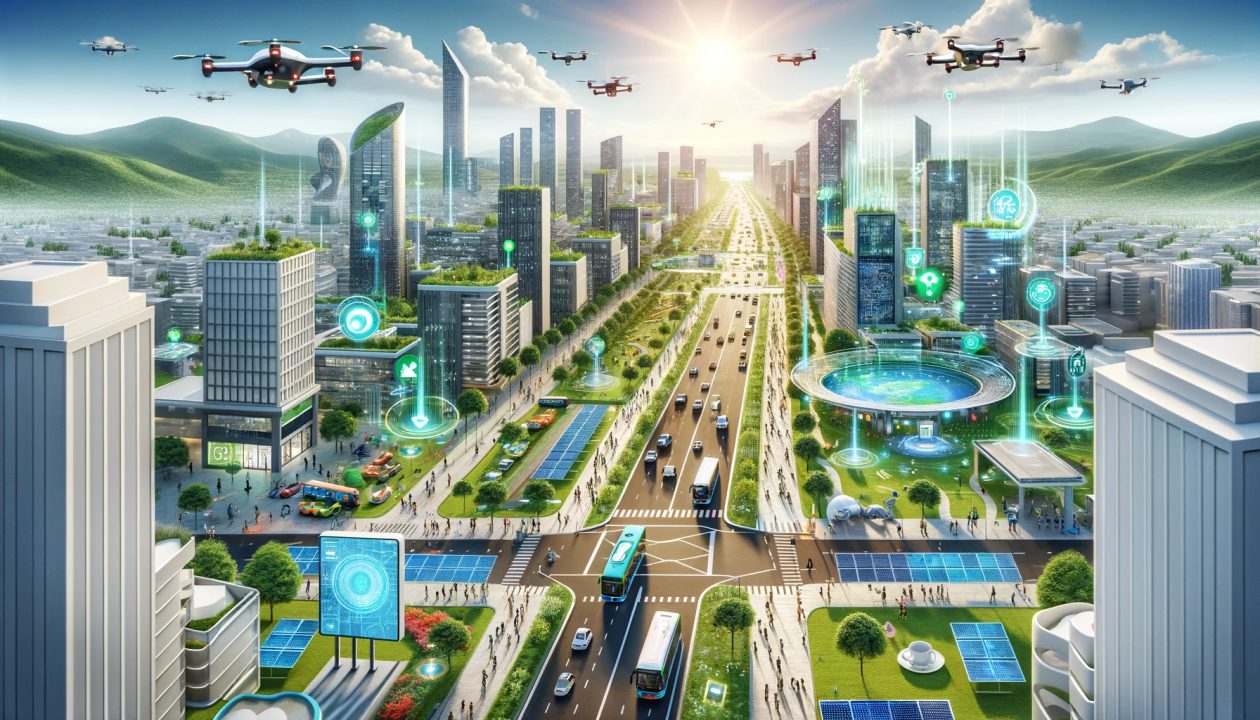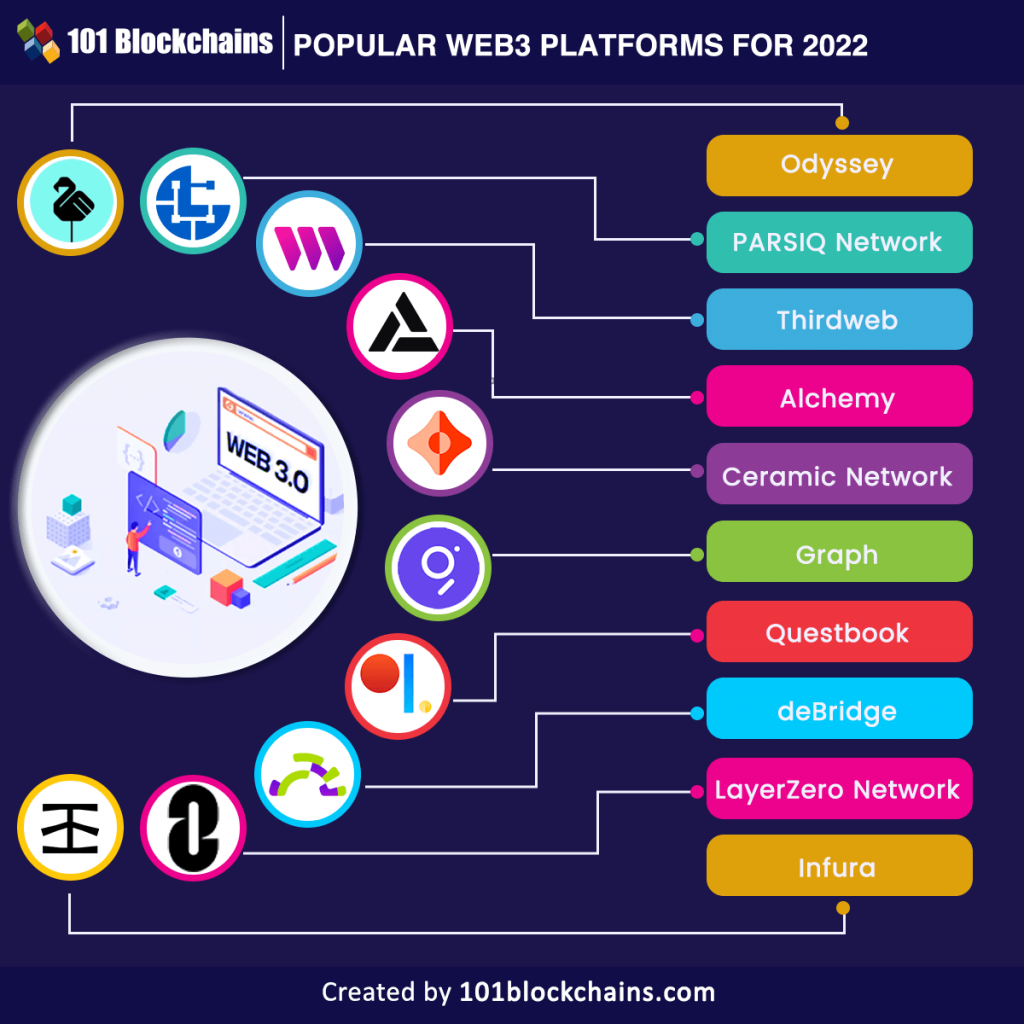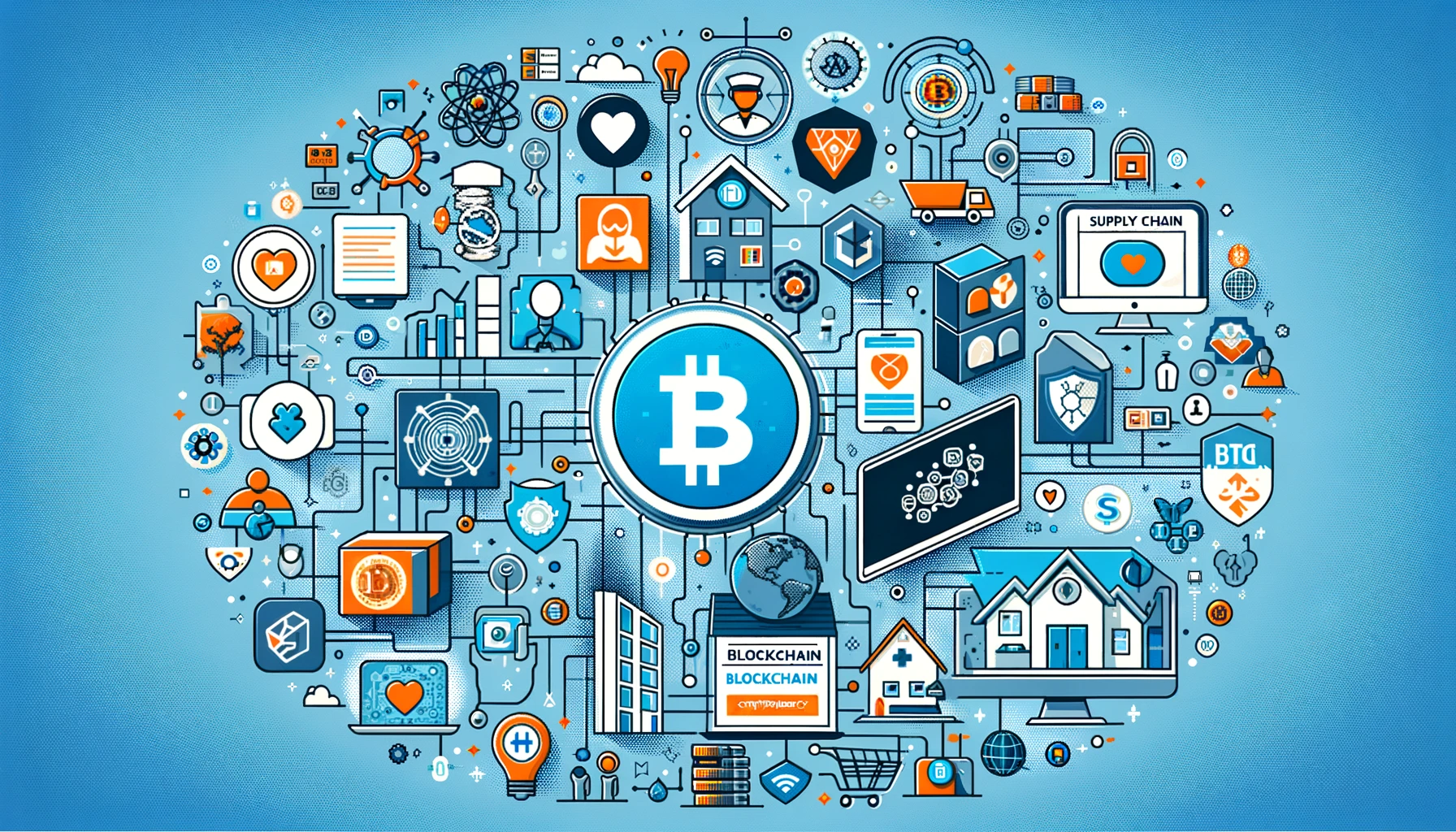
AI in Smart Cities: Building Connected Urban Futures – The Brain Behind Smarter Living
Imagine a city where traffic flows smoothly, energy is never wasted, and public services respond instantly to your needs. A city where the air is cleaner, public spaces are safer, and everyone feels more connected and empowered. This isn’t science fiction; it’s the promise of Smart Cities, and the incredible technology making it possible is Artificial Intelligence (AI).
In today’s rapidly urbanizing world, cities face immense challenges, from congestion and pollution to resource scarcity and public safety concerns. Smart cities offer a revolutionary approach to tackling these issues by using technology to improve efficiency, sustainability, and the overall quality of life for their residents. And at the very heart of these intelligent urban environments lies AI, acting as the brain that processes vast amounts of information and makes intelligent decisions.
This article will explore how AI is transforming our urban landscapes, creating more responsive, resilient, and livable cities for everyone.
What Exactly is a Smart City?
Before we dive into AI, let’s understand what a "Smart City" truly means. A smart city isn’t just about having Wi-Fi everywhere or fancy digital billboards. It’s a city that uses Information and Communication Technologies (ICT), like the Internet of Things (IoT), sensors, and data analytics, to:
- Improve Efficiency: Making services like transport, energy, and waste management run smoother.
- Enhance Sustainability: Reducing environmental impact, conserving resources, and promoting green living.
- Boost Quality of Life: Creating safer, healthier, and more convenient environments for citizens.
- Foster Economic Growth: Attracting businesses and creating new opportunities.
- Encourage Citizen Engagement: Giving residents a voice and making them part of the city’s development.
In essence, a smart city collects real-time information from various sources (like sensors on streetlights, traffic cameras, or even people’s smartphones) and uses this data to make better, more informed decisions about how the city operates.
What is Artificial Intelligence (AI)? (Simplified for Beginners)
Think of AI as computer systems that can learn, reason, and solve problems in ways that traditionally required human intelligence. It’s not about robots taking over the world, but about making machines smarter and more helpful.
Here’s a breakdown of what AI can do:
- Learning: AI systems can analyze huge amounts of data to find patterns and make predictions. The more data they get, the smarter they become.
- Decision-Making: Based on what they’ve learned, AI can make choices or recommend actions.
- Understanding Language and Images: AI can process human language (like Siri or Alexa) and recognize objects or faces in pictures and videos.
- Automation: AI can automate repetitive tasks, freeing up humans for more complex work.
In a smart city, AI is the engine that transforms raw data into actionable insights, making the city "think" and adapt.
Why AI is the Brain of a Smart City
Imagine a city without a brain. It would be chaotic, inefficient, and unresponsive. Similarly, a smart city without AI would just be a collection of disconnected sensors and data points. AI acts as the central nervous system and brain of a smart city because it:
- Processes Big Data: Cities generate an enormous amount of data every second. AI is uniquely capable of sifting through this "big data" quickly and efficiently, identifying trends and anomalies that humans would miss.
- Enables Predictive Analysis: Instead of just reacting to problems, AI can predict them before they happen. For example, predicting traffic jams or potential crime hotspots.
- Automates Operations: Many city functions can be automated by AI, from adjusting streetlights to optimizing public transport routes, leading to significant savings and better service.
- Personalizes Services: AI can help tailor city services to the individual needs of citizens, making urban living more convenient and personalized.
- Enhances Decision-Making: City planners and officials can use AI-powered insights to make more informed and strategic decisions about urban development, resource allocation, and policy.
Key Applications of AI in Smart Cities
AI’s potential in urban environments is vast and touches almost every aspect of city life. Let’s explore some of the most impactful applications:
1. Intelligent Transportation & Traffic Management
One of the most visible impacts of AI in smart cities is on how we move around.
- Optimized Traffic Flow: AI analyzes real-time traffic data from sensors, cameras, and GPS to dynamically adjust traffic light timings, reroute vehicles, and minimize congestion. It can predict rush hours and even suggest alternative routes.
- Smart Public Transit: AI optimizes bus and train schedules, predicts delays, and helps manage fleets efficiently. It can even predict passenger demand to adjust service frequency.
- Autonomous Vehicles: While still developing, AI is crucial for self-driving cars, which could revolutionize urban mobility by reducing accidents, parking needs, and emissions.
- Smart Parking: AI-powered systems guide drivers to available parking spots, reducing cruising time and congestion.
2. Enhanced Public Safety & Security
AI significantly improves how cities keep their residents safe.
- Predictive Policing: AI analyzes historical crime data, social media trends, and other factors to identify potential crime hotspots, allowing law enforcement to deploy resources more effectively and prevent incidents.
- Intelligent Surveillance: AI-powered cameras can detect unusual activities, recognize faces, identify abandoned objects, and alert authorities to potential threats in real-time, without constant human monitoring.
- Emergency Response Optimization: AI can help emergency services (police, fire, ambulance) find the fastest routes, manage resources during crises, and even predict where and when emergencies are likely to occur.
- Disaster Management: AI can analyze weather patterns, seismic activity, and infrastructure data to predict natural disasters, issue early warnings, and help coordinate evacuation and relief efforts.
3. Sustainable Energy Management
AI is a game-changer for making cities more energy-efficient and environmentally friendly.
- Smart Grids: AI optimizes energy distribution by balancing supply and demand, integrating renewable energy sources (solar, wind), and predicting energy consumption patterns. This reduces waste and improves grid stability.
- Intelligent Building Management: AI systems in smart buildings adjust heating, ventilation, and air conditioning (HVAC) systems, lighting, and other energy-consuming elements based on occupancy, weather, and time of day, significantly reducing energy bills.
- Streetlight Optimization: AI can dim or brighten streetlights based on real-time pedestrian and vehicle traffic, saving energy and reducing light pollution.
4. Efficient Waste Management
Tackling urban waste is a major challenge, and AI offers smart solutions.
- Optimized Collection Routes: AI analyzes fill levels of smart bins (which have sensors) and traffic patterns to plan the most efficient collection routes, reducing fuel consumption and operational costs.
- Waste Sorting and Recycling: AI-powered robots and vision systems can automatically sort waste at recycling plants, improving the purity of recycled materials and reducing contamination.
- Predictive Maintenance for Bins: AI can predict when bins might break down or need emptying, allowing for proactive maintenance and better service.
5. Smart Infrastructure & Utilities
AI helps cities manage their physical assets and essential services more effectively.
- Predictive Maintenance: AI analyzes data from sensors on bridges, roads, water pipes, and other infrastructure to predict when maintenance is needed, preventing costly failures and extending asset lifespan.
- Water Management: AI monitors water flow, detects leaks in pipelines, and optimizes water distribution, conserving this precious resource.
- Smart Lighting: Beyond energy saving, AI can adjust lighting for public safety or aesthetic purposes based on events or time of day.
6. Improved Public Health & Citizen Services
AI can enhance the well-being of city residents.
- Personalized Health Services: While sensitive, AI could help guide citizens to appropriate health services, provide personalized health tips based on public data (e.g., air quality), and assist in managing public health crises.
- Digital Citizen Portals: AI-powered chatbots and virtual assistants can provide instant answers to citizen queries about city services, permits, and regulations, improving accessibility and reducing administrative burden.
- Urban Planning & Design: AI can simulate the impact of new developments on traffic, public services, and the environment, helping urban planners make data-driven decisions.
7. Environmental Monitoring & Climate Resilience
AI plays a crucial role in making cities more resilient to environmental challenges.
- Air Quality Monitoring: AI analyzes data from air quality sensors to identify pollution sources, predict smog events, and inform public health advisories.
- Climate Change Adaptation: AI models can predict the impact of rising sea levels, extreme weather events, and heatwaves, helping cities develop strategies for adaptation and mitigation.
- Biodiversity Monitoring: AI can analyze camera trap data or acoustic sensors to monitor urban wildlife, contributing to conservation efforts within city limits.
How AI Works in Practice: A Simplified Example
Let’s imagine a smart traffic system powered by AI:
- Data Collection (IoT Sensors): Cameras, loop detectors embedded in the road, and GPS data from vehicles continuously collect information about traffic volume, speed, and congestion at various intersections.
- Data Transmission: This raw data is sent wirelessly to a central cloud server or edge computing device.
- AI Analysis (The Brain): AI algorithms (using techniques like machine learning and deep learning) in the server analyze this vast stream of data in real-time.
- It learns historical traffic patterns (e.g., rush hour on Tuesdays).
- It identifies current anomalies (e.g., an unexpected slowdown due to an accident).
- It predicts future conditions (e.g., "congestion will worsen in the next 15 minutes if nothing changes").
- Decision & Action: Based on its analysis and predictions, the AI makes decisions:
- It sends commands to traffic lights to extend green lights on congested roads or shorten them on less busy ones.
- It updates digital signs to warn drivers of congestion and suggest alternative routes.
- It can even alert emergency services if it detects an unusual incident.
- Continuous Learning: The AI constantly monitors the effects of its actions. If changing a traffic light sequence improves flow, it learns from that success. If it doesn’t, it adjusts its strategy for next time, becoming smarter and more efficient over time.
The Benefits of AI in Smart Cities
The integration of AI brings a multitude of advantages to urban living:
- Increased Efficiency: Streamlined operations, reduced resource waste, and optimized services.
- Enhanced Sustainability: Lower energy consumption, reduced carbon emissions, better waste management, and improved environmental quality.
- Improved Quality of Life: Less time stuck in traffic, safer streets, cleaner air, and more convenient access to services.
- Cost Savings: Reduced operational expenses for city governments through automation and optimization.
- Better Decision-Making: Data-driven insights empower city planners and policymakers to make more informed and effective choices.
- Greater Resilience: Cities become better equipped to respond to emergencies, natural disasters, and unforeseen challenges.
- Innovation & Economic Growth: Smart city initiatives foster new businesses, create jobs, and attract investment.
Challenges and Considerations for AI in Smart Cities
While the benefits are clear, implementing AI in smart cities also comes with important challenges that need careful consideration:
- Data Privacy: Collecting vast amounts of data about citizens raises concerns about privacy. Robust regulations and transparent data handling policies are essential.
- Cybersecurity: Smart city systems are interconnected and rely heavily on data. This makes them potential targets for cyberattacks, requiring strong security measures.
- Ethical AI: Ensuring AI systems are fair, unbiased, and don’t discriminate against certain groups is crucial. Algorithms must be transparent and accountable.
- Cost & Infrastructure: Implementing AI requires significant investment in sensors, computing power, communication networks, and skilled personnel.
- Digital Divide: Ensuring that all citizens, regardless of their technological literacy or economic status, can benefit from smart city initiatives and are not left behind.
- Public Acceptance & Trust: Gaining the trust of citizens is vital. People need to understand how their data is used and feel comfortable with the technology.
- Regulation & Governance: Developing clear legal frameworks and governance models for AI use in public spaces is a complex but necessary task.
The Future of AI in Smart Cities
The journey of AI in smart cities is just beginning. As AI technologies continue to evolve, we can expect even more sophisticated and integrated urban solutions. We’ll likely see:
- Hyper-Personalized Services: AI will tailor city services even more precisely to individual needs and preferences.
- Seamless Integration: Even more seamless communication between different city systems (e.g., traffic systems communicating directly with waste management to avoid conflicts).
- AI-Powered Robotics: More widespread use of autonomous robots for tasks like deliveries, infrastructure inspection, and public space maintenance.
- Citizen-AI Collaboration: Platforms that allow citizens to actively contribute data and insights, fostering a truly collaborative urban environment.
- Digital Twins: Highly detailed virtual models of cities, powered by AI, that can simulate scenarios and predict outcomes before implementing changes in the real world.
Conclusion
AI is no longer just a futuristic concept; it is rapidly becoming the essential backbone of smart cities worldwide. By intelligently processing data, predicting needs, and automating operations, AI is empowering urban environments to become more efficient, sustainable, safe, and ultimately, more livable for everyone.
While challenges around privacy, security, and ethics must be carefully navigated, the immense potential of AI to transform our urban futures is undeniable. As we continue to build connected urban landscapes, AI will be the indispensable "brain" that guides our cities towards a smarter, brighter, and more resilient tomorrow. The journey to truly intelligent urban living is well underway, and AI is leading the charge.



Post Comment